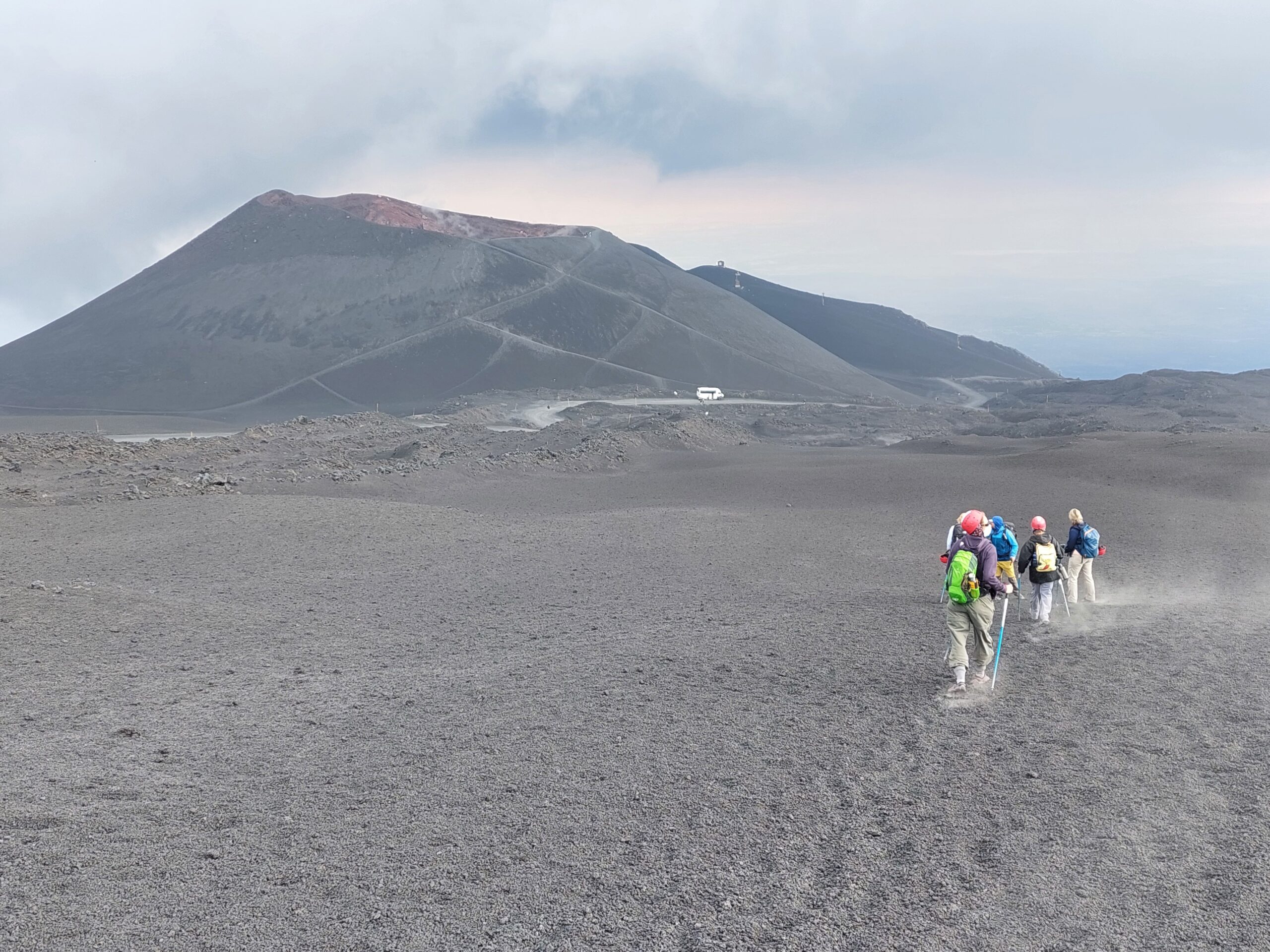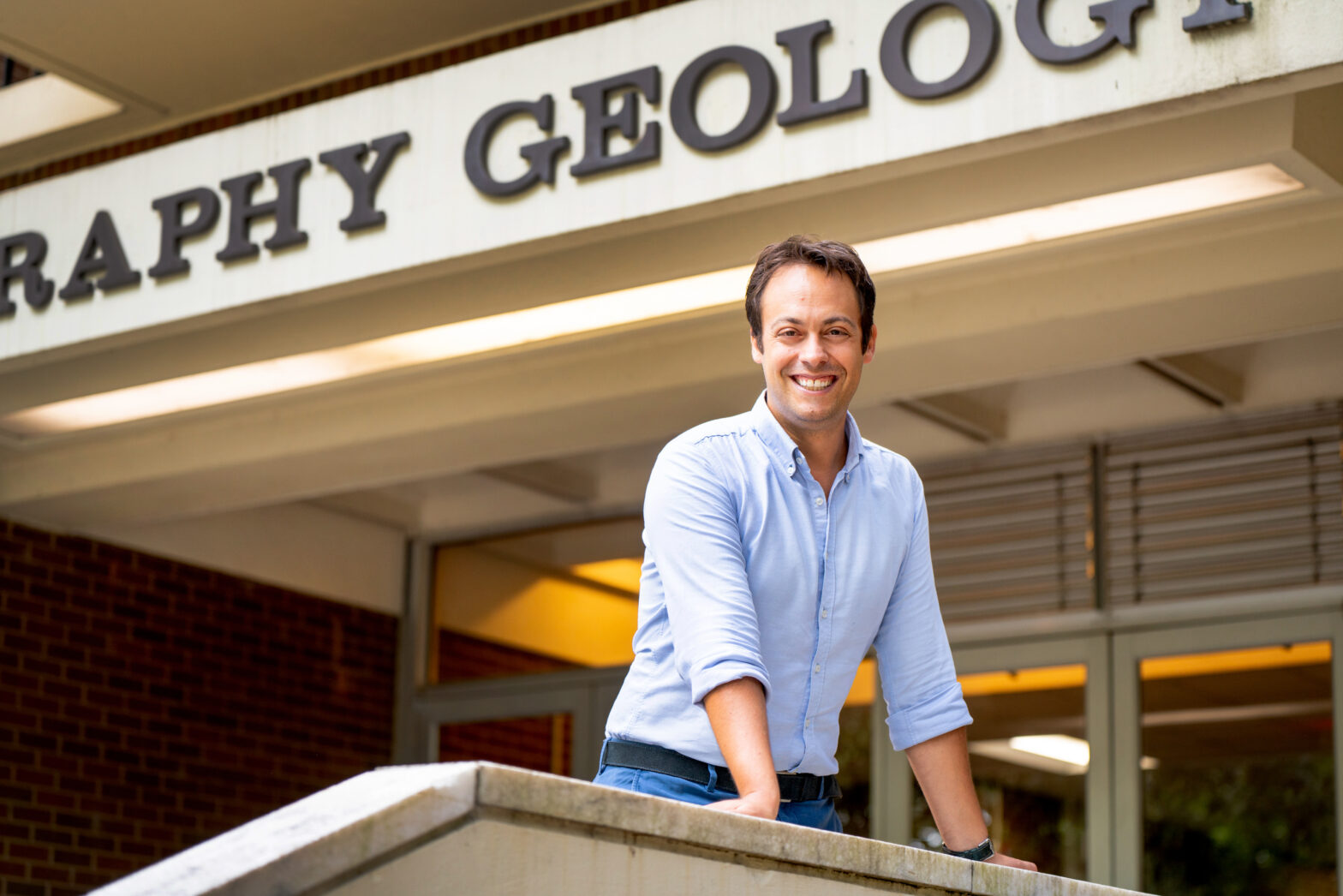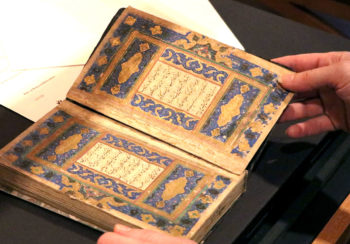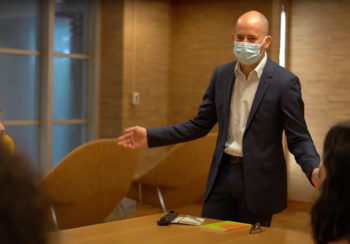Much like lava flows, Mattia Pistone began his interest in volcanology and petrology via an energetic and wandering path.
It started in Pistone’s hometown of Pescara, Italy, when he began studying Latin literature and noting how the Romans used nature as a model for technology. The Romans are known as excellent engineers, but they were also early geologists. They knew that choosing the right rock for the right purpose could lead to longstanding engineering, architectural and artistic masterpieces: limestone for aqueducts, marbles for monumental buildings and statues, and cement made of volcanic material for roads and walls across the empire.
Pistone’s attraction to this aspect of his heritage led him to delve deeper into Roman and Greek perceptions of nature. Geology, he found, allowed his mind to combine both nature and history.
“Geology occurs in deep time, having much longer time scales than human history,” said Pistone, assistant professor of geology in the Franklin College of Arts & Sciences. “Volcanoes span all geological histories because they stretch from a long time ago to some that are so new that they are younger than my students.”
Magma Mia!
Volcanoes are Pistone’s principal passion—his lab is affectionately named “Magma Mia!” He spent the summer of 2022 at Mount Etna in Sicily with a group of students collecting volcanic rocks along with other organic samples. Mixed in with all of these is the element mercury, which comes out of the bowels of the Earth and can be easily transmitted up the trophic chain from soil to plants to insects to birds to fish and other animals, and finally to people.
“Mount Etna is considered one of the largest emitters of mercury in the world,” said Pistone. “We did a sampling campaign to understand how much mercury can be accumulated in organic materials like insects, plants and soil and then into the surrounding ecosystem.”
In appreciable concentrations, mercury is toxic and can damage several of our bodily organs, not the least being our brain. Pistone’s hunch is that his team will find a higher concentration of mercury to the east of Etna because of prevailing winds pushing the volcanic plumes eastward. The city of Catania and towns located on the eastern side of the volcano number nearly 1 million in population, raising the stakes considerably. What impact is Etna having on the health of the people nearby through their grapes or tomatoes or cattle? And are mercury concentrations related to the size of eruptions?
“Our hypothesis is that more mercury is related to a larger eruption size,” Pistone said. “If we find those correlations, maybe we can use mercury as a tool to monitor the status of the volcano.”
In recent years, Etna’s activity has increased. Since 2020, the volcano has had more than 50 explosive events called paroxysms, spewing lava and gas into the air and over the Earth, making it far more active than similar volcanoes around the globe. Pistone and his BIO-VOLCANO team (funded through the Teaming for Interdisciplinary Research Pre-Seed Program) will compare mercury levels with those found in a study done 10 years ago by scientists from the University of Oxford, who examined samples from the region’s plentiful chestnut trees.
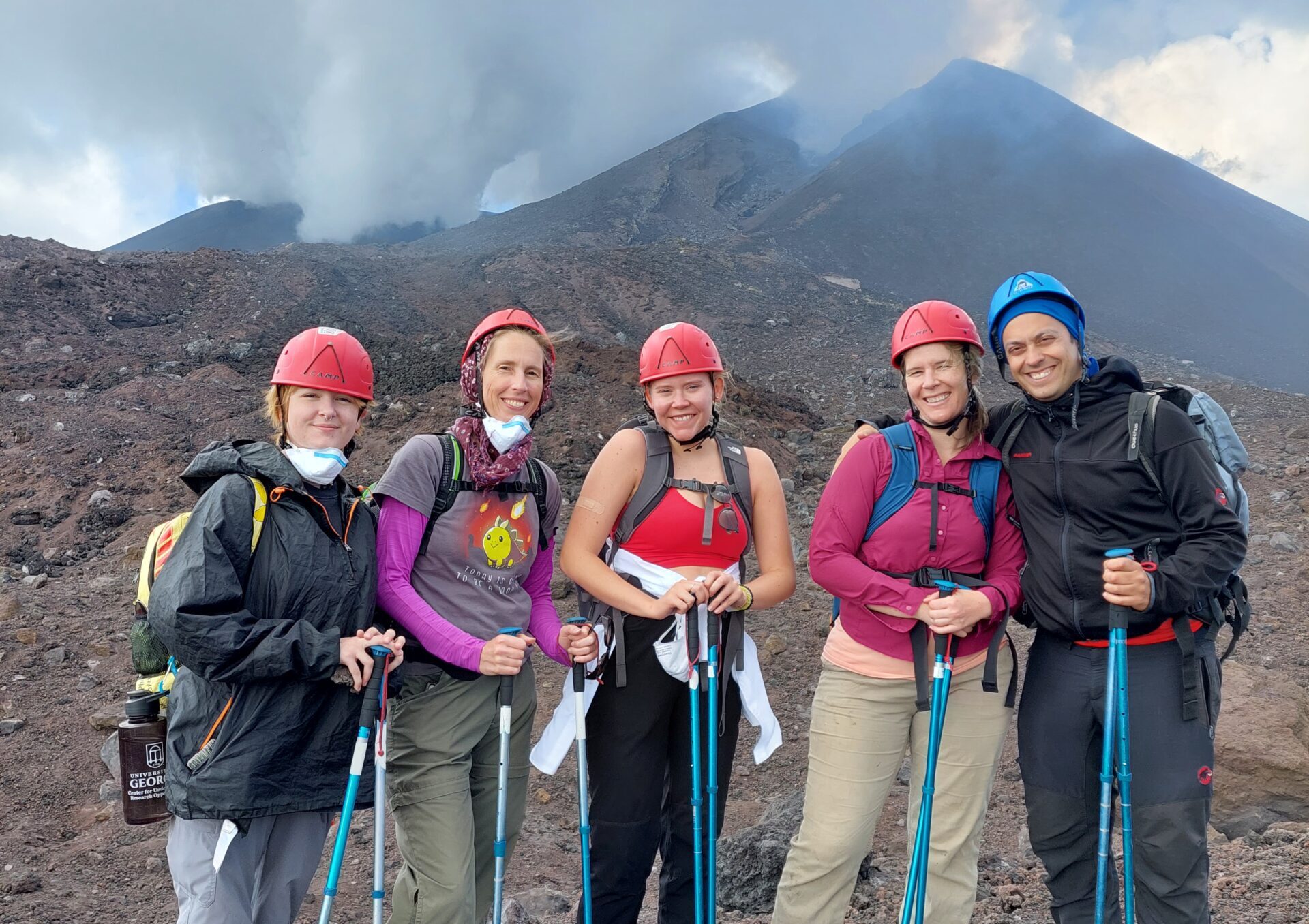
Drilling for deeper answers
Mercury is not the only element on Pistone’s mind. He is involved in a worldwide initiative known as DIVE (short for Drilling the Ivrea-Verbano zone and funded by the International Continental Scientific Drilling Program) that includes more than 100 scientists with the mission “to probe the deep continental crust and its transition to the mantle.”
Through DIVE, Pistone leads an effort to probe for the first time the boundary between the Earth’s outer skin (the crust) and its rocky dermis (the mantle), a geological frontier that has been chased since the early 1960s. DIVE will also try to determine how deep the biosphere (the zone where biological creatures can live) extends into the Earth. They’ll be drilling into the crust from a spot in the Italian Alps where the crust-mantle appears to be very close to the surface, sometimes just one kilometer deep. That means this geological frontier is so close that they can actually dig into the mantle, which is generally located at a depth of 35-40 kilometers in continental environments.
Since 2017 Pistone has also been working to create a consortium of scientists from Italy, Switzerland, Germany, Austria, France and the U.S. to answer three big questions. First, what does the transition from the crust to the mantle look like? Second, how deep does the biosphere penetrate the mantle? And third, can humans—by studying this portion of the biosphere where things live under the most extreme of conditions—learn how life might be able to live on other planets?
The work also could lead to discoveries of mineral resources, such as copper, cobalt, nickel and lithium, that could be used in energy production. This not only could help reduce humans’ carbon footprint, Pistone said, but significantly affect geopolitical concerns.
“The war in Ukraine is not only about political tension between countries,” he said. “Ukraine has the largest lithium reservoir in Europe. About 500,000 tons of lithium, the ‘white gold’ needed for the transition to renewable energy with zero carbon emissions, are located in the Donbas region.”
Ukraine’s immense deposit of lithium, used to power batteries in everything from computers to electric cars, is a highly precious resource. Pistone also pointed to the enormous investment China has made in the Democratic Republic of Congo to control mining activities in the world’s largest known deposit of cobalt, another vital element used in products from smartphones to jet engines.
Despite its importance in global affairs, Pistone said geoscience has eroded in higher education over the last decade in response to financial pressures and low undergraduate enrollment. This puts the field between the proverbial rock and a hard place. As a geologist at UGA, Pistone works to stimulate the eco-consciousness of students who will create the society of tomorrow and a (hopefully) more harmonized equilibrium between humans and Earth.
“Man can still kill for a rock and its resources therein, like a caveman with advanced weapons of 21st century,” Pistone said. “As Aesop wrote in his fable ‘The Four Oxen and the Lion,’ united we stand, divided we fall. Mankind without Earth is self-annihilation; Earth without mankind is another uninhabited planet in the solar system.”
